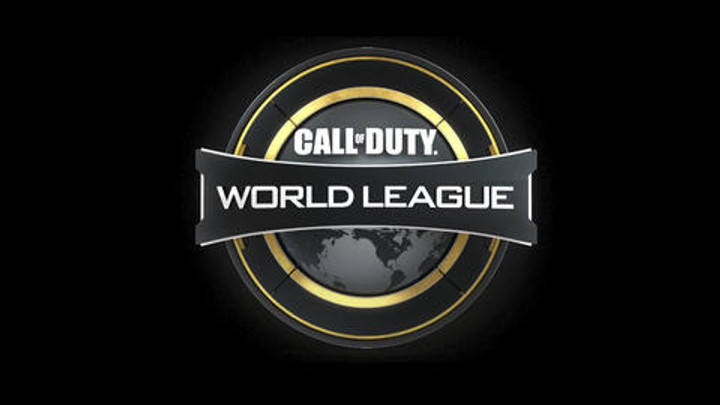Transcript of Esports In Less Than 3 Minutes: CWL by Matt Simpson - December 2019
The Call of Duty World League has been something of an enigma in the esports universe. The series is probably the most well-known FPS in history, with millions upon millions of players investing in each yearly installment in ways other games could only dream of. Yet the CWL has always felt like a second-tier esport, lagging behind the big guns of DOTA, League of Legends, CS:GO and even in recent years, the Overwatch League.
And it’s the success of the latter series that has forced Activision hand to rethink its entire esports structure - considering they are partnered with Blizzard, who created this very format. So let’s have a look at the new CoD League, what we know so far about this new season, and whether it will work.
Call of Duty has been played as an esport as far back as 2006, with tournaments of Call of Duty 4: Modern Warfare organised at gaming events in North America and Europe. As the game became the behemoth it now is, and esports took off in the west, so to did competitive Call of Duty grow exponentially. The MLG began to get involved, and soon the clamour was there for a fully organised Call of Duty seasonal tournament, with the best esports teams competing to play at flagship finals around the world.
Hence the CWL was formed, featuring the biggest esports teams from around the world competing on the latest CoD entry for a chance to play at a world final. The tournaments themselves were well-run and got decent crowds, but it was not the success that Activision hoped it would be. It’s hard to understand the reasons behind this, but if we compare it to the relative success of the Overwatch League there are a number of differences.
For starters, the CWL was embedded in traditional esports teams, with famous names such as Luminosity, OpTic Gaming and Evil Geniuses operating within the format. Whilst connecting to traditional gaming bases, this model has been considered quite inaccessible to a larger audience, as unlike traditional sports they have no reason to connect to one team in particular based on home country or city.
But the Overwatch League has worked partly because teams are based in various key cities, meaning it’s a lot easier to choose a team to follow, even as a casual fan. Each team has its own colour scheme, logos and skins within the game, allowing fans to identify themselves more easily with their chosen team. It also means fans can interact more directly with their favourite players by meeting them at local events, and going to home games to cheer them on.
That’s the same sense of accessibility Activision are now trying to do with Call of Duty. 12 teams from around the world, based in major cities like Los Angeles, New York, Paris and London will compete in both home and away matches throughout the season, with world finals taking place in key locations throughout the year. Esports teams are still involved in backing some of these teams, such as Splyce in Toronto and Team Envy in Dallas, although some of the key players in the CWL won’t be involved, like FaZe Clan and 100 Thieves.
This mirrors the first year of the Overwatch League, with 12 teams based exclusively in North America and Europe in the inaugural season, before introducing 20 teams for the following year to include Asian teams. It’s clear Activision are hoping to replicate this model for the Call of Duty League, so expect more teams and cities to be involved in future years, assuming this new format works out.
But will it work? The biggest concern is that Overwatch is a more accessible game full stop. Its colourful cast of characters are more identifiable than military dude number 702, and whilst some Call of Duty maps like Nuketown and Rust are easily identifiable, it just doesn’t sell in the same way as the cartoony art style of Blizzards FPS MOBA. However, if the franchising creates solid easily identifiable teams, playing engaging and competitive matches with exciting unpredictable finals, then maybe we’ll see Call of Duty make the next step, and become the go-to game for FPS esports.
-------------------
Also on this Topic: Call Of Duty League in 2020- The Viewer's Guide
For more Call of Duty news, be sure to check out our dedicated section or some of our MW2 Guides & Tutorials below:
Modern Warfare 2 Guides - Jack Links Skin | Unlock All Operators | Check Server Status | Get Twitch Drops | Post-Credit Scene Explained | Unlock Gold Camo | Get Burger Town Operator | MGB Nuke | Unlock Every Weapon | All Killstreaks| Safe Code Locations | Check KD Ratio | XP Farm Trick | Chopper Gun Glitch | Weapon Tuning | Change Name Color | Hardcore Tier 1 Mode | Turn Off Crossplay | Steam Deck | Raid: Atomgrad | How To Play "Support A Team" | Unlock Orion Camo | Aim Assist Settings |
Modern Warfare 2 Fixes & Issues- Best NVIDIA GeForce Drivers | Dev Error 6036 | MW2 Missing Items | Unlimited Tactical Sprint Bug | Stuck On Installing Bug | Display Name Not Allowed Bug | Gold Camo Not Unlocking | Voice Chat Not Working| Display FPS Counter |
Best Modern Warfare 2 Loadouts - Best Weapon Tier List | M4 Loadout | PDSW 528 Loadout | TAQ-V Loadout | M4 Loadout | Fennec 45 | No Recoil M4 Loadout | SA-B 50 Loadout | Kastov-74U Loadout |

 No ads, our video library,
No ads, our video library,

